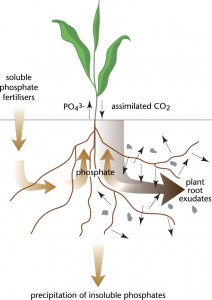Agriculture which has the various principles of ecology interspersed within it is called sustainable agriculture. Ecology is nothing but a study pertaining to a relationship of organisms with the surrounding environment.

The various goals of sustainable agriculture are:
* To augment the quality of the environmental natural resources and thus provide a boost to the agricultural economy.
*Similarly, improve the standards of living for the farmers who widely practice such agriculture.
* To provide sufficient food to mankind through the agricultural practices.
* Use the natural resources in the best possible way and condemn any usage of nonrenewable resources.
Sustainable farming practices:

There are certain practices like tilling and irrigation which intensely damage the soil either due to erosion or salinization problems.
The USDA which is a National Resources Conservation Service contributes to all the economical needs to the farmers who practice sustainable agriculture by using the natural resources.
When a normal agricultural practice is concerned, the farmer uses methods like irrigation or tilling, he unintentionally removes the important nutrients from the soil. This leaves the soil dry and can lead to erosion.
But, with the sustainable agriculture practice, there are several techniques involved to replenish this soil. Moreover, natural gas or any other mineral ores are not used. Thus, these practices make the agriculture sustainable.
The nitrogen that is needed for agriculture can be made available by various methods like:
* Legume crops or forages like alfalfa crops are grown. These crops form a process called as symbiosis with rhizobia, which is a nitrogen-fixing bacteria.
*Also, there are genetically engineered crops which also undergo symbiosis with nitrogen fixing bacteria.
The need of water for sustainable agriculture:
There is a large demand of water for agriculture through irrigation.
But, these practices must not demand for more water than is naturally required . More water would mean that there would be a need to use nonrenewable resources.
Submersible pumps and drip irrigation are some of the techniques which are commonly used as they provide the exact amount of water needed to the crops and hence there wouldn’t be any unnecessary wastage of water.
Soil erosion problems rectified:

More than a thousand million ton of southern Africa’s soils are estimated to undergo soil erosion every year. The erosion of the top soil makes the land unsuitable for agriculture.
There are several steps taken in order to stop the erosion of soil.
*The usage of chemical fertilizers must be stopped.
*When there is water runoff the top soil gets eroded. This has to be stopped to prevent soil erosion.
* Tilling shouldn’t be done.
Use of phosphate in modern sustainable agriculture:

This is the most elemental component that is used in chemical fertilizers.
But with the increasing demand, the depletion of phosphate is predicted. If this happens, then phosphate has to be recovered from animal or human wastes.
Demand of energy in agricultural practices:
Food processing, transportation and storage -all need energy.
Since there is huge demand of fossils fuels and other non renewable resources, a problem has arisen in agriculture. To provide a better solution to this, ‘energy-smart’ solutions are used for all the techniques used in sustainable agriculture.
Suitable land:
Land can be considered to be a finite resource on planet earth. The Food and Agriculture Organization states that in a few years, the land that is suitable for agriculture will be lost to other urbanization procedures and acute industrialization.
Thus there is intense fear arising regarding the future of agriculture.
The treatment of soil for improved agriculture:
For soil sterilization purposes, soil steaming is done. The various pests in the soil are destroyed in this process.
Also, the composting of farm organic wastes are needed to provide a reliable source of energy required in agriculture.
The advantages of sustainable agriculture:
*Prevents pollution:
The waste that is produced in sustainable farming apparently remains within the eco system and hence there is no fear of any pollution.
*Improves biodiversity:
The soil is replenished and nourished regularly .Moreover, even the animals live in the farms and thus biodiversity is improved.
* Provides job to many people:
Sustainable farming provides plenty of benefits and also involves work that does not pose any risk or danger to the workers. They are also provided with competitive salaries and good living conditions.
*Reduction in the expenses:
There is a minimum usage of non renewable resources and hence a reduction in the expenses incurred. Purchasing of fossil fuels is also considerably minimized.
Disadvantages of sustainable agriculture:
*The resources that are available are not properly utilized
* Since the livestock rearing is not much, the byproducts of cropping are not properly utilized.
*Soil fertility is not maintained always due to lack of crop rotation
*The resources like land and capital are not made the best use of.
Even though there are a few disadvantages related to sustainable farming, the advantages seem to overlook the disadvantages. Moreover, with continuous practice of sustainable farming, the high rise in fear regarding the depletion of non renewable resources is substantially diminished.

Leave a Reply